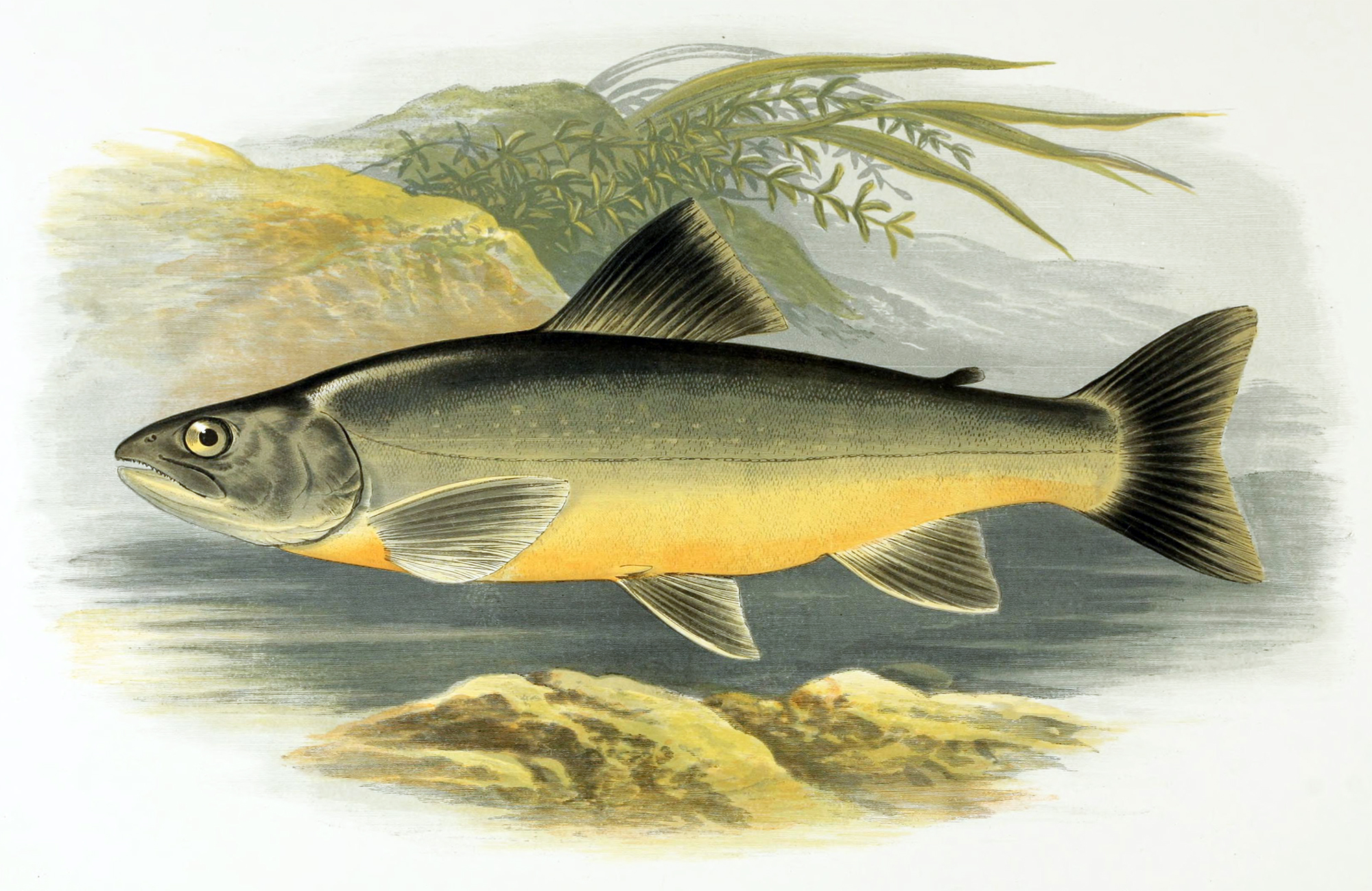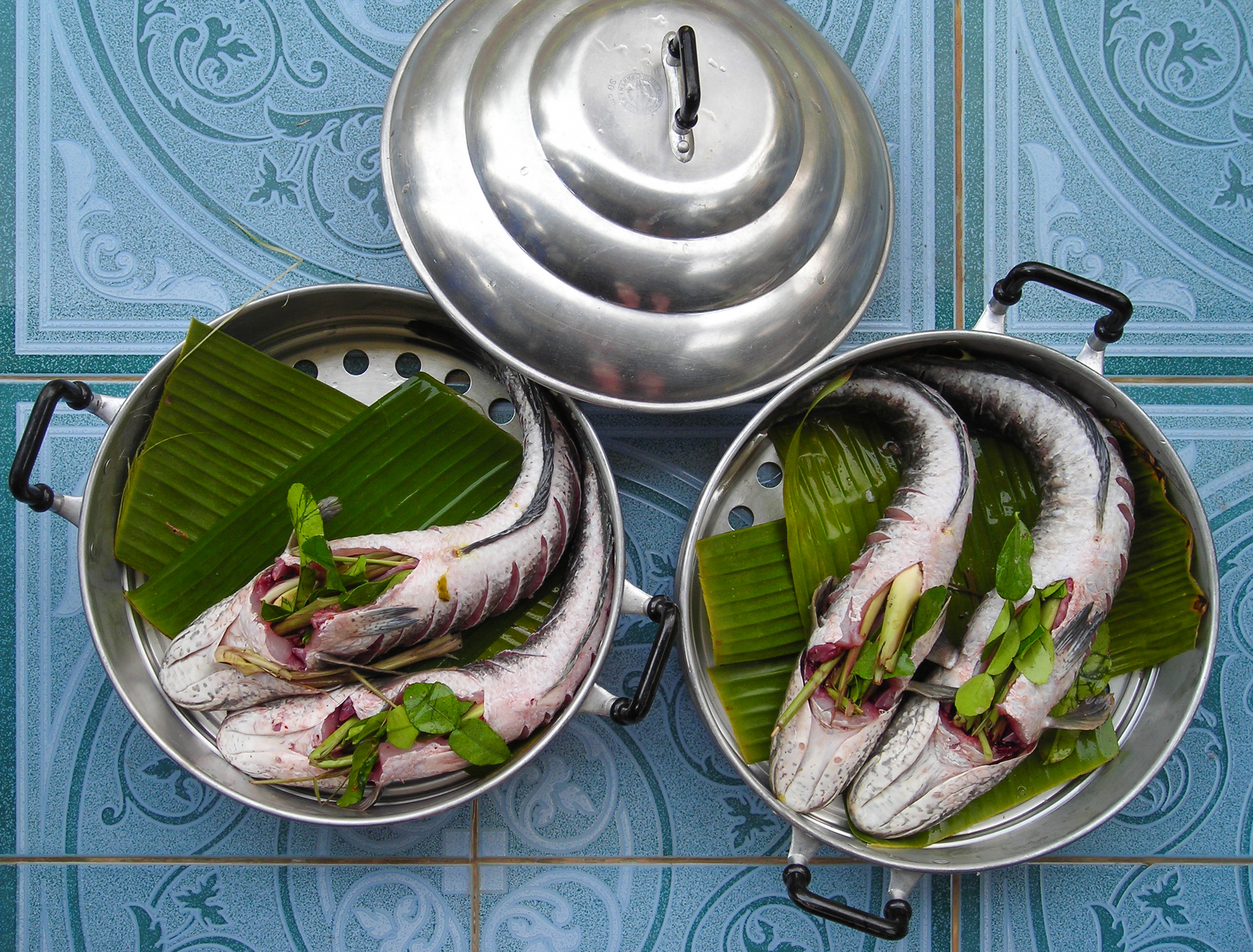|
Salmo
''Salmo'' is a genus of ray-finned fish from the subfamily Salmoninae of family (biology), family Salmonidae, and is part of the tribe (biology), tribe Salmonini along with the sister genera ''Salvelinus'' and ''Salvethymus''. Almost all ''Salmo'' species are native only in the Old World (including most of Europe, coastal North Africa and part of West Asia around the Black Sea), the only exception being the Atlantic salmon (''Salmo salar''), which is also naturally found across the North Atlantic in eastern North America. The number of distinct species and subspecies in ''Salmo'' is a debated issue. The Atlantic salmon and brown trout (''Salmo trutta'') are widespread species and have been introduced species, introduced worldwide as pisciculture, farmed food fish or recreational fishing, recreational game fish, while most of the other ''Salmo'' species are narrowly distributed forms endemism, endemic to single drainage basin, watersheds. The name ''Salmo'' derives from the Latin ... [...More Info...] [...Related Items...] OR: [Wikipedia] [Google] [Baidu] |
Atlantic Salmon
The Atlantic salmon (''Salmo salar'') is a species of ray-finned fish in the family Salmonidae. It is the third largest of the Salmonidae, behind Hucho taimen, Siberian taimen and Pacific Chinook salmon, growing up to a meter in length. Atlantic salmon are found in the northern Atlantic Ocean and in rivers that flow into it. Most populations are anadromous, hatching in streams and rivers but moving out to sea as they grow where they mature, after which the adults seasonally move upstream again to spawn. When the mature fish re-enter rivers to spawn, they change in colour and appearance. Some populations of this fish only migrate to large lakes, and are "landlocked", spending their entire lives in freshwater. Such populations are found throughout the range of the species. Unlike Pacific species of salmon, ''S. salar'' is iteroparous, which means it can survive spawning and return to sea to repeat the process again in another year with 5–10% returning to the sea to spawn again ... [...More Info...] [...Related Items...] OR: [Wikipedia] [Google] [Baidu] |
Brown Trout
The brown trout (''Salmo trutta'') is a species of salmonid ray-finned fish and the most widely distributed species of the genus ''Salmo'', endemic to most of Europe, West Asia and parts of North Africa, and has been widely introduced globally as a game fish, even becoming one of the world's worst invasive species outside of its native range. Brown trout are highly adaptable and have evolved numerous ecotypes/subspecies. These include three main ecotypes: a riverine ecotype called river trout or ''Salmo trutta'' morpha ''fario''; a lacustrine ecotype or ''S. trutta'' morpha ''lacustris'', also called the lake trout (not to be confused with the lake trout in North America); and anadromous populations known as the sea trout or ''S. trutta'' morpha ''trutta'', which upon adulthood migrate downstream to the oceans for much of its life and only returns to fresh water to spawn in the gravel beds of headstreams. Sea trout in Ireland and Great Britain have many regional names: ... [...More Info...] [...Related Items...] OR: [Wikipedia] [Google] [Baidu] |
Salmoninae
Salmonidae (, ) is a family of ray-finned fish, the only extant member of the suborder Salmonoidei, consisting of 11 extant genera and over 200 species collectively known as "salmonids" or "salmonoids". The family includes salmon (both Atlantic and Pacific species), trout (both ocean-going and landlocked), char, graylings, freshwater whitefishes, taimens and lenoks, all coldwater mid-level predatory fish that inhabit the subarctic and cool temperate waters of the Northern Hemisphere. The Atlantic salmon (''Salmo salar''), whose Latin name became that of its genus ''Salmo'', is also the eponym of the family and order names. Salmonids have a relatively primitive appearance among teleost fish, with the pelvic fins being placed far back, and an adipose fin towards the rear of the back. They have slender bodies with rounded scales and forked tail fins, and their mouths contain a single row of sharp teeth. Although the smallest salmonid species is just long for adults, most salm ... [...More Info...] [...Related Items...] OR: [Wikipedia] [Google] [Baidu] |
Salmonidae
Salmonidae (, ) is a family (biology), family of ray-finned fish, the only extant member of the suborder Salmonoidei, consisting of 11 extant genera and over 200 species collectively known as "salmonids" or "salmonoids". The family includes salmon (both Atlantic and Pacific species), trout (both ocean-going and landlocked), Salvelinus, char, Thymallus, graylings, freshwater whitefishes, taimens and lenoks, all coldwater fish, coldwater mid-trophic level, level predatory fish that inhabit the subarctic and cool temperate waters of the Northern Hemisphere. The Atlantic salmon (''Salmo salar''), whose Latin name became that of its genus ''Salmo'', is also the eponym of the family and order names. Salmonids have a relatively primitive appearance among teleost fish, with the pelvic fins being placed far back, and an adipose fin towards the rear of the back. They have slender bodies with rounded fish scale, scales and forked caudal fin, tail fins, and their fish jaw, mouths contain a si ... [...More Info...] [...Related Items...] OR: [Wikipedia] [Google] [Baidu] |
Pisciculture
Fish farming or pisciculture involves commercial animal husbandry, breeding of fish, most often for food, in fish tanks or artificial pen (enclosure), enclosures such as fish ponds. It is a particular type of aquaculture, which is the controlled cultivation and fishing, harvesting of aquatic animals such as fish, crustaceans, molluscs and so on, in natural environment, natural or pseudo-natural environments. A facility that releases juvenile fish into the wild for recreational fishing or to supplement a species' natural numbers is generally referred to as a fish hatchery. Worldwide, the most important fish species produced in fish farming are carp, catfish, salmon and tilapia. Global demand is increasing for fish as food, dietary fish protein, which has resulted in widespread overfishing in wild fisheries, resulting in significant decrease in fish stocks and even complete depletion in some regions. Fish farming allows establishment of artificial fish colony (biology), colonies tha ... [...More Info...] [...Related Items...] OR: [Wikipedia] [Google] [Baidu] |
Acantholingua
''Salmo ohridanus'', also known by the local name as the ''belvica'' in North Macedonia or ''belushka'' in Albania, is a species of freshwater salmonid fish, endemic to Lake Ohrid in Albania and North Macedonia. ''Salmo ohridanus'' is a relatively small fish, usually shorter than and less than weight. It is a commercially exploited species subject to heavy fishing, and has been bred in fish farms for over 50 years. It has also been intentionally hybridized with another endemic species, the Ohrid trout (''Salmo letnica''). It is threatened by the hybridization, degradation of water quality and overfishing; but the stock remains abundant. In earlier literature the belvica has variously been treated as belonging to suggested endemic genera ''Acantholingua'' and ''Salmothymus''. Genetic studies however indicate it is a good member of the genus ''Salmo'', and closest to the softmouth trout ''Salmo obtusirostris''. Nevertheless, it is quite distinct from the brown trout The brow ... [...More Info...] [...Related Items...] OR: [Wikipedia] [Google] [Baidu] |
Salmothymus
''Salmothymus'' is a genus name of fish in the family Salmonidae, established for the Adriatic trout (''Salmothymus obrusirostris''). More commonly, however, the species is considered a member of the wider genus ''Salmo'', i.e. ''Salmo obtusirostris''.{{FishBase, genus=Salmo, species=obtusirostris, year=2009, month=September ''Salmothymus'' thus is a junior synonym In taxonomy, the scientific classification of living organisms, a synonym is an alternative scientific name for the accepted scientific name of a taxon. The botanical and zoological codes of nomenclature treat the concept of synonymy differently. ... of ''Salmo'', not in current use. References Salmonidae Obsolete vertebrate taxa Taxonomy articles created by Polbot ... [...More Info...] [...Related Items...] OR: [Wikipedia] [Google] [Baidu] |
Salvelinus
''Salvelinus'' is a genus of Salmonidae, salmonid fish often called char or charr; some species are called "trout". ''Salvelinus'' is a member of the subfamily Salmoninae within the family Salmonidae. The genus has a northern circumpolar distribution, and most of its members are typically cold-water fish that primarily inhabit fresh waters. Many species also migrate to the sea. Most char may be identified by light-cream, pink, or red spots over a darker body. Scales tend to be small, with 115–200 along the lateral line. The pectoral, pelvic, anal, and the lower aspect of caudal fins are trimmed in snow white or cream leading edges. Many members of this genus are popular sport fish, and a few, such as lake trout (''S. namaycush'') and arctic char (''S. alpinus'') are objects of commercial fisheries and/or aquaculture. Occasionally such fish escape and become invasive species. Deepwater char are small species of char living below 80 m in the deep areas of certain lakes. They ar ... [...More Info...] [...Related Items...] OR: [Wikipedia] [Google] [Baidu] |
Ray-finned Fish
Actinopterygii (; ), members of which are known as ray-finned fish or actinopterygians, is a class of bony fish that comprise over 50% of living vertebrate species. They are so called because of their lightly built fins made of webbings of skin supported by radially extended thin bony spines called '' lepidotrichia'', as opposed to the bulkier, fleshy lobed fins of the sister clade Sarcopterygii (lobe-finned fish). Resembling folding fans, the actinopterygian fins can easily change shape and wetted area, providing superior thrust-to-weight ratios per movement compared to sarcopterygian and chondrichthyian fins. The fin rays attach directly to the proximal or basal skeletal elements, the radials, which represent the articulation between these fins and the internal skeleton (e.g., pelvic and pectoral girdles). The vast majority of actinopterygians are teleosts. By species count, they dominate the subphylum Vertebrata, and constitute nearly 99% of the over 30,000 extant ... [...More Info...] [...Related Items...] OR: [Wikipedia] [Google] [Baidu] |
Food Fish
Many species of fish are caught by humans and consumed as food in virtually all regions around the world. Their meat has been an important dietary source of protein and other nutrients in the human diet. The English language does not have a special culinary name for food prepared from fish like with other animals (as with '' pig'' vs. ''pork''), or as in other languages (such as Spanish '' pez'' vs. '' pescado''). In culinary and fishery contexts, ''fish'' may include so-called shellfish such as molluscs, crustaceans, and echinoderms; but, more expansively, ''seafood'' covers both fish and other marine life used as food. Since 1961, the average annual increase in global apparent food fish consumption (3.2 percent) has outpaced population growth (1.6 percent) and exceeded the increase in consumption of meat from all terrestrial animals except poultry (4.9 percent), both combined (2.8 percent) and individually (bovine, ovine, porcine, et cetera). In ''per capita'' terms, food f ... [...More Info...] [...Related Items...] OR: [Wikipedia] [Google] [Baidu] |








